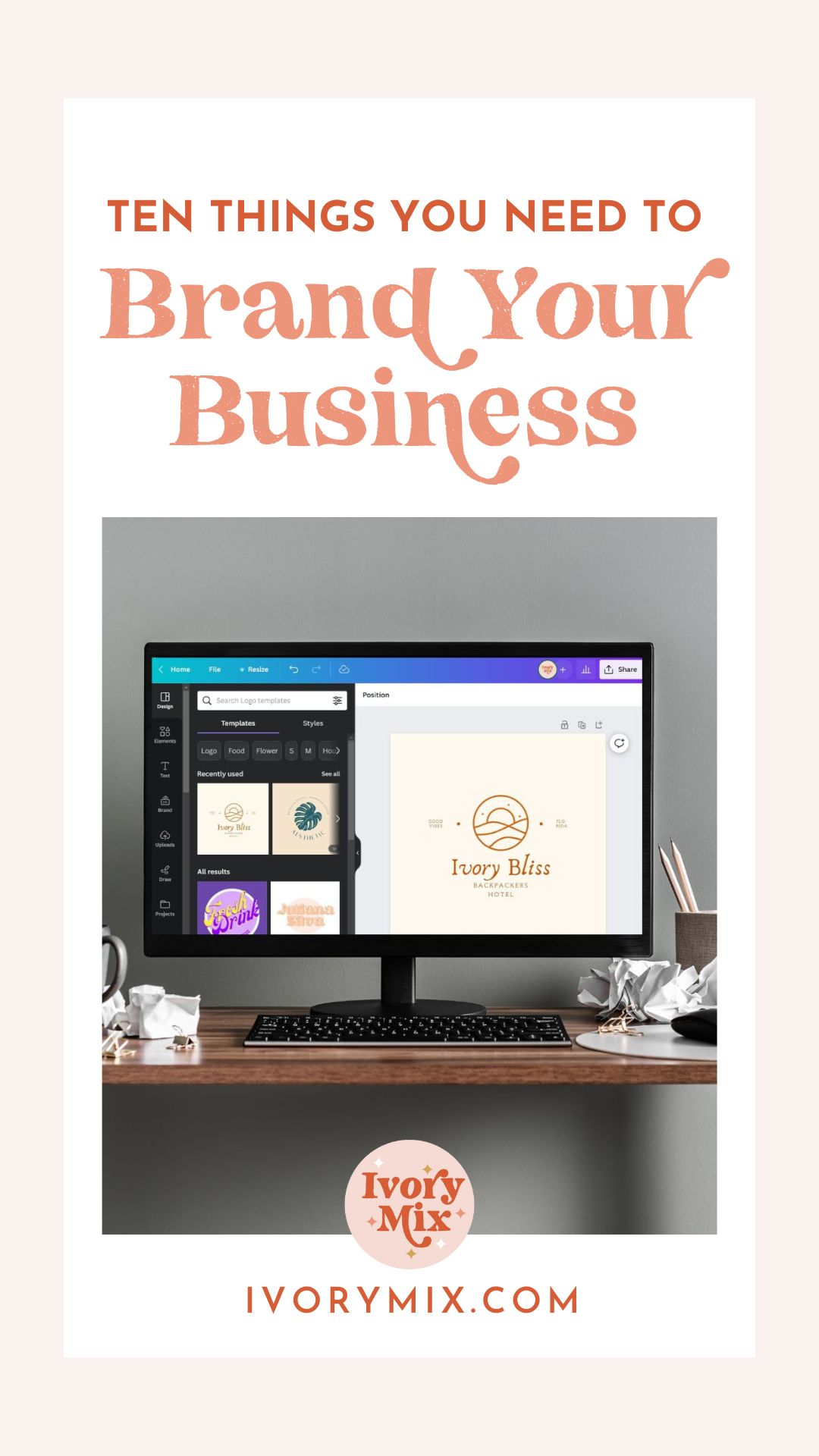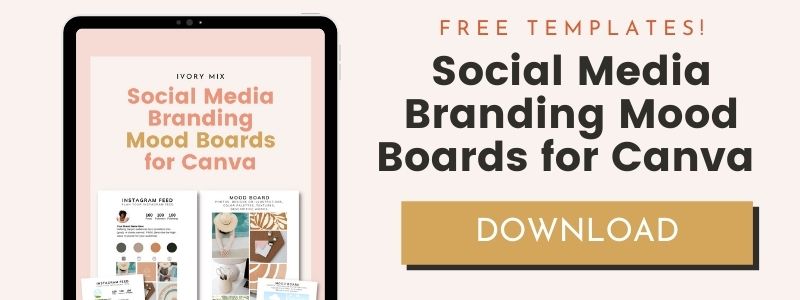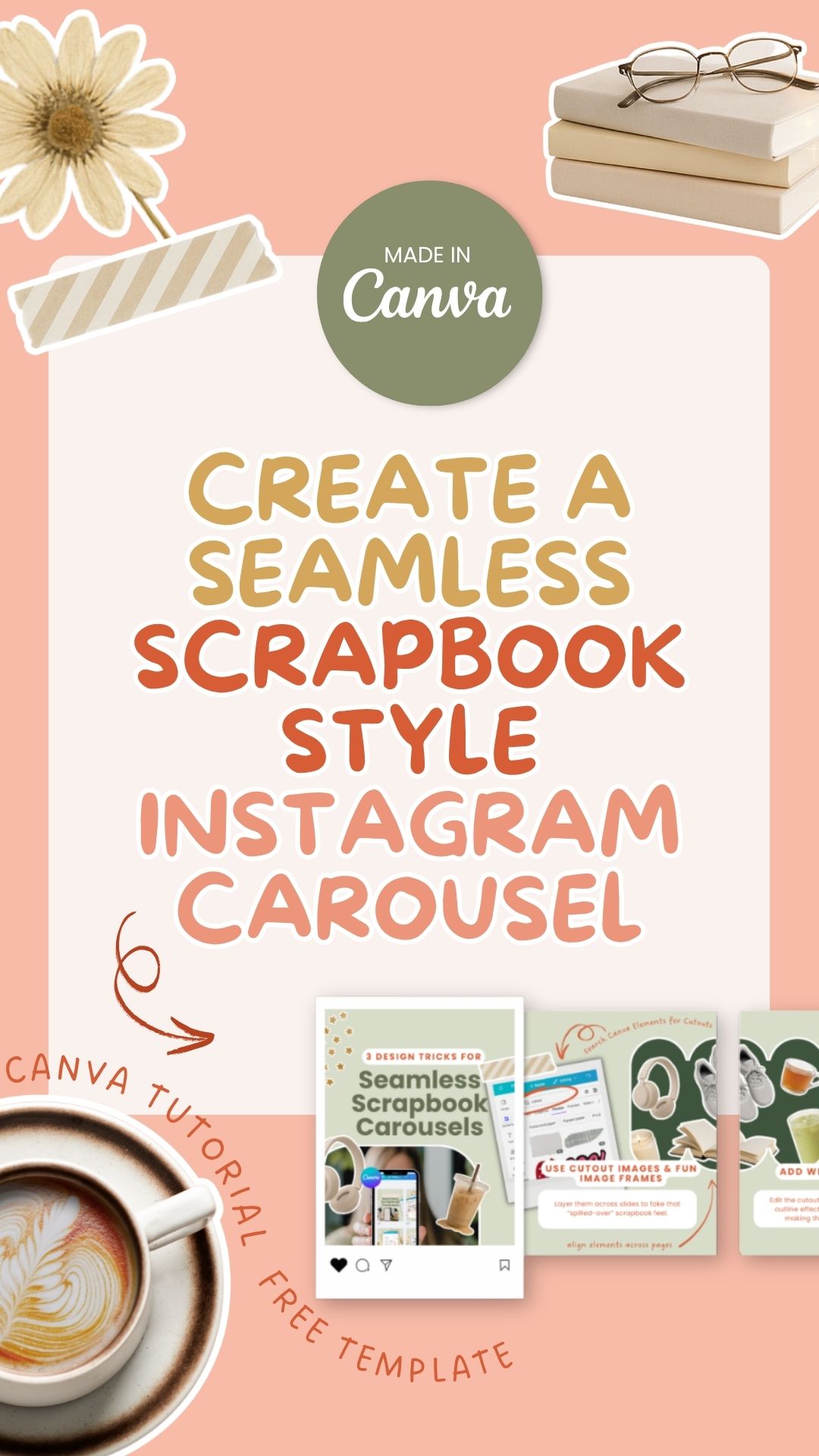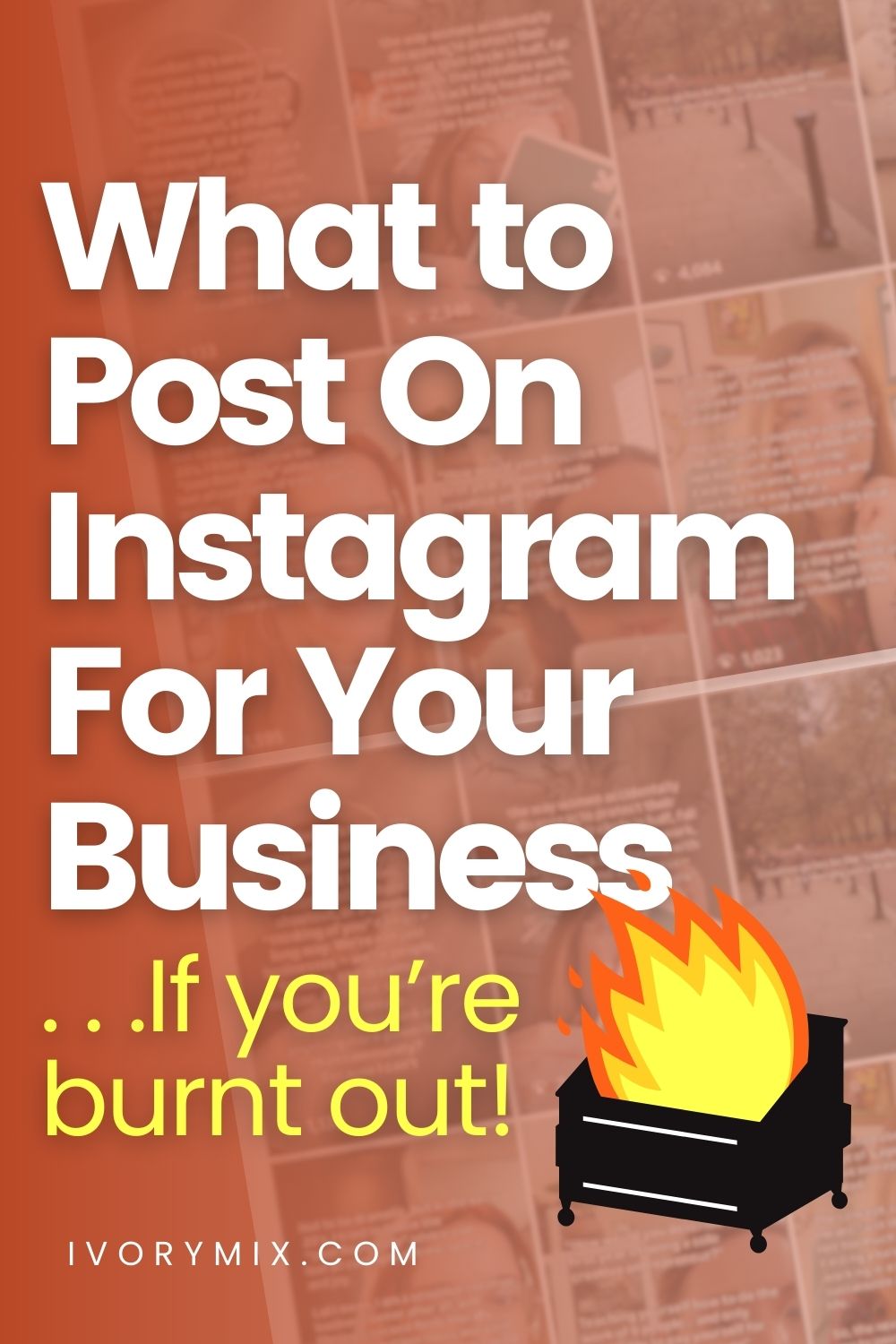get 500+ free images, templates & marketing strategies! You're one click away, Don't Miss It.
10 Essential Branding Assets for Your Online Business or Blog
This post may contain affiliate links. Please read the disclaimer

Are you ready to take your business to the next level? Well, get ready because today we’re diving deep into the world of branding.
Building a successful business isn’t just about having a killer product, stellar customer service, or an amazing website (although those things definitely help!). It’s also about having strong brand assets that set you apart from the crowd and make your business unforgettable.
Here, I’m going to share with you the ten brand assets that every online business needs to succeed. These assets will not only boost your brand recognition but also cultivate trust and loyalty among your customers.
So whether you’re just starting out or looking to revamp your existing brand, these essential assets are a must-have in your business toolkit. From a killer logo that captivates your audience to a cohesive visual identity that screams “you,” we’ve got you covered.
Don’t forget to hit the follow button and leave a comment below – I’d love to hear your thoughts on the topic and learn about your own branding journey!
1. Colors and Fonts: Bring Your Brand to Life!
Picture this: you stumble upon a website or a social media post, and instantly, you’re captivated. The colors are vibrant, the fonts are stylish, and you can’t help but feel a strong connection to the brand. That, my friend, is the magic of well-chosen colors and fonts!
When it comes to building your brand, colors and fonts are like your best friends – they play a crucial role in shaping your brand’s personality and leaving a lasting impression on your audience.
Now, let’s talk about colors. The colors you choose for your brand can evoke specific emotions and create a certain vibe. Think about the message you want to convey – are you a bold and energetic brand or a calming and peaceful one? Do you want to inspire enthusiasm, trust, or happiness? Each color has its own unique meaning and can communicate different things to your audience. So choose wisely!
So let’s take a look at some common brand colors and the vibes they bring:
Blue: This calming color is often associated with trust, dependability, and professionalism. It evokes feelings of stability and security, making it a popular choice for corporate brands or brands in the finance industry. When using blue, you can cultivate a sense of reliability and instill confidence in your audience.
Red: The color of passion and energy, red commands attention and grabs the spotlight. It can evoke strong emotions like excitement, love, and urgency. Brands that use red often want to stand out, make a statement, and create a sense of urgency or action. Red can ignite a fire in your audience’s heart, making them feel passionate about your brand.
Yellow: The color of sunshine and happiness, yellow is associated with optimism, positivity, and warmth. It can create a sense of joy and cheerfulness, making it a great choice for brands that want to evoke happiness or energy. Using yellow can make your audience feel uplifted and optimistic when they engage with your brand.
Green: As the color of nature, green represents growth, health, and harmony. It is often used by brands that focus on sustainability, wellness, or environmental causes. Green can create a feeling of balance and freshness, making your audience feel connected to nature and your brand’s commitment to making a positive impact.
Purple: Associated with royalty, luxury, and creativity, purple captures a sense of elegance and sophistication. Brands that use purple often want to convey a sense of exclusivity, beauty, and uniqueness. Purple can create a feeling of extravagance and spark creativity in your audience.
Pink: This color is often associated with femininity, romance, and tenderness. It can create a sense of softness, grace, and approachability. Brands that use pink often want to target a female audience or evoke feelings of love and compassion. Pink can make your audience feel nurtured and connected to your brand.
Now let’s move on to fonts. Fonts are like the outfit your brand wears – they can convey a sense of professionalism, playfulness, elegance, or even quirkiness. Just like choosing the right clothes, you want to select fonts that reflect your brand’s personality and resonate with your target audience. Are you going for a clean and modern look or a more traditional and timeless vibe? The choice is yours!
Remember, consistency is key. Once you’ve chosen your colors and fonts, make sure to use them consistently across all your brand assets – from your website to your social media posts and even your business cards. This will help create a cohesive and memorable brand experience for your audience.
Want a fun way to plan out your brand on a mood board? Check out this tutorial
Or you can get started creating your brand with this completely free moodboard and social media feed planning template.
2. Logo: Make Your Mark with an unforgettable logo!
Ah, the logo – the visual representation of your brand. It’s the first thing people see, and it’s what they’ll remember long after they’ve interacted with your business. So, no pressure at all, right?
Seriously, though, your logo is like the face of your brand. It’s what sets you apart and leaves a lasting impression on your audience. That’s why it’s so important to invest time and thought into designing a logo that truly represents your brand’s values and personality.
When creating your logo, consider the following:
Simplicity: Keep it clean and uncomplicated. A cluttered logo can be overwhelming and difficult to remember. Think of iconic logos like Nike, Apple, or McDonald’s – simple, yet instantly recognizable!
Relevance: Your logo should be relevant to your brand and industry. If you’re in the natural beauty industry, organic shapes and earthy colors may work better. The key is to create a connection between your logo and what you do.
Versatility: Your logo will appear across various platforms and mediums, so make sure it’s versatile. It should look just as stunning on a website header as it does on a small social media profile picture. Flexibility is key!
Now, I know not everyone is a design expert, so don’t be afraid to seek help from professionals or use online logo design tools that can guide you through the process. The most important thing is to create a logo that resonates with your audience and makes them feel excited and curious about your brand.
Canva’s logo maker is the perfect tool for anyone just starting out who want to create a professional-looking logo without breaking the bank. It is not going to be a logo you can copyright, but it’s a good place to start. With its user-friendly interface and vast library of design elements, you can quickly and easily customize your logo to fit your brand’s personality and style. And the best part? You don’t need any design skills to use it! Canva’s logo maker offers pre-designed templates that you can customize with your brand’s name, colors, and fonts. You can even add icons, symbols, or shapes that represent your brand’s values, mission, or vision.
3. Custom Domain Name and Email Address: A Professional Touch to Your Brand!
Alright, let’s talk about taking your brand to the next level of professionalism! One of the best ways to do that is by getting a custom domain name and email address.
First things first – what is a custom domain name? Simply put, a domain name is the address people use to find your website on the internet. Instead of using a generic URL like yourbusinessname.wixsite.com or yourbusinessname.wordpress.com, having your own domain name like yourbusinessname.com gives your brand a more professional edge and helps build trust with your audience.
Now, let’s move on to email addresses. Have you ever received a business email from a generic address like johnsmith@gmail.com? It’s not exactly inspiring confidence, is it? That’s where a custom email address like info@yourbusinessname.com or hello@yourbusinessname.com comes in! It not only looks more professional, but it also helps promote your brand and makes it easier for people to remember your contact information.
Setting up a custom domain name and email address is easier than you might think – many website builders offer domain name registration and email hosting services. Or, you can use a domain registrar like GoDaddy and then set up an email account using a tool like custom emails on Google.
No matter which option you choose, having a custom domain name and email address is a must-have if you want to take your brand to the next level of professionalism and stand out in today’s crowded market.
4. Email Signature: Sign off with Style!
You might think that an email signature is a small detail – an afterthought, even. But let me tell you, a well-crafted email signature can make a big impact on your brand’s image and leave a lasting impression on your recipients.
Think of your email signature as a digital handshake – it’s the last thing people see before they finish reading your email and move on to the next task. So why not make it count? Make sure your email signature includes:
Your name and title: This helps establish your credibility and position within your brand.
Your contact information: This can include your custom email address, website, social media profiles, or even a phone number.
A call-to-action: This could be a link to your latest blog post, a promotion you’re running, or an invitation to join your mailing list. This helps keep the conversation going and foster engagement with your audience.
Your brand’s visual identity: Include your logo, brand colors, or even a headshot. This helps create a cohesive and memorable brand experience for your audience.
Now, when it comes to designing your email signature, remember to keep it simple and clean. Avoid cluttering your signature with too much information or too many images. And of course, make sure it’s mobile-friendly – many people check their emails on their phones these days, so you want to make sure your signature looks good no matter the device.
Ready to make yours? Make it now using the free email signature generator from Canva
5. Business Mission Statement or Social Media Bio: Share Your Purpose with the World!
It’s time to dig deep and share the heart and soul of your brand through a powerful mission statement or an engaging social media bio. This is your chance to let the world know what you stand for and why your brand exists!
Whether you’re crafting a mission statement or a social media bio, authenticity is key. Start by asking yourself a few important questions: What is the driving force behind your business? What problem are you solving, or what value are you offering to your audience? What sets you apart from the competition?
Your bio or mission statement should be clear, concise, and compelling. Make it impactful and let your passion shine through! For example, “We help creative online business owners reach their goals for followers, subscribers and sales with organic online marketing strategies, social templates and coaching”
Check out this tutorial for your Instagram bio here.
6. Photo / Graphic Style: Bring Your Brand to Life Through Visuals!
Let’s talk about the visual side of your brand. Photos and graphics have the power to capture attention, tell stories, and create an emotional connection with your audience.
Your brand’s photo and graphic style should be an extension of your personality and align with your brand’s values. Are you going for a bold and vibrant look, or do you prefer a clean and minimalist aesthetic? Trust your intuition and choose a style that feels authentic to who you are and what you want to portray to the world.
Here are a few tips to help you define your photo and graphic style:
Consistency is key: Aim for a consistent look and feel across all your visual content. This will create a cohesive brand experience and make your content instantly recognizable.
Colors and filters: Choose a color palette that compliments your brand’s personality. Experiment with different filters or editing techniques to create a signature look that sets you apart.
Authentic imagery: Use real photos of yourself, your team, or your customers whenever possible. Authenticity breeds connection, and your audience will appreciate seeing the faces behind your brand.
Branded graphics: Create branded templates for your social media posts, blog graphics, or promotional materials. Include your logo, consistent fonts, and colors to reinforce your brand identity.
Remember, you don’t need to be a professional photographer or graphic designer to create stunning visuals. There are plenty of affordable tools and stock photo websites that can help you bring your brand to life. Get creative, have fun, and let your personality shine through in every image or graphic you share!
For instance, below is a sample of our graphics and photos found inside the Ivory Mix content membership where we provide members with access to over 11,000 stock photos, Canva graphic templates, captions, and marketing resources. I’ve created this content membership to empower busy creative entrepreneurs so they can easily and confidently create stunning content that not only fits their brand but also grows traffic, leads, and profits in their business.

7. Email List (for Email Marketing): Build Your Community and Stay Connected!
Let’s talk about the power of building an email list and how it can help you stay connected with your audience and grow your business!
First things first – what is an email list? It’s a collection of email addresses from people who have opted into receiving updates, newsletters, or promotional materials from your brand. It’s a powerful tool for staying top of mind with your audience, promoting new products or services, and nurturing relationships with your tribe.
So how can you build your email list? Start by creating a clear and compelling opt-in offer – something that your audience would find valuable and be willing to exchange their email address for. This could be a free e-book or access to exclusive content.
Next, make sure to include opt-in forms on your website, social media profiles, and other marketing materials. Be upfront about what subscribers can expect to receive from you and how often.
Once you have your email list up and running, it’s important to keep your audience engaged with valuable content that speaks to their interests and needs. Use your email marketing platform to personalize your emails, segment your audience, and track engagement metrics like open rates and click-through rates.
Remember, building an email list is a long-term strategy that requires patience and consistency. But with the right approach and a commitment to nurturing your relationships with your subscribers, it can be a powerful asset for growing your brand and making an impact.
Want to dive into building an email list further? Check out this in-depth tutorial
8. Content Strategy: Share Your Expertise and Build Your Brand!
Your content strategy should be rooted in your brand’s values, personality, and the needs of your audience. Start by defining your content pillars – the main topics or themes that your brand is all about. For example, if your brand is all about healthy living, your content pillars could be nutrition, fitness, mental health, and lifestyle.
Once you have your content pillars defined, it’s time to start brainstorming ideas for blog posts, social media posts, videos, or other types of content. Use keyword research tools to identify popular topics that your audience is searching for, and think outside the box to add your own unique twist.
When it comes to executing your content strategy, consistency is key. Create a content calendar that outlines your publishing schedule, and stick to it! Use social media scheduling tools to save time and ensure that your content is reaching your audience at the right time.
Content marketing is all about sharing your expertise, building trust with your audience, and positioning yourself as a thought leader in your industry. Don’t be afraid to share your personal stories and experiences – authenticity and vulnerability are more important than ever.
Want a fast way tocome up with 50 new ideas for your next Instagram Reel, TikTok or Blog Post in just a few minutes. Check out this tutorial.
https://youtu.be/XWKQQ7qW0lM
9. Target Audience: Connecting with Your Ideal Community
When it comes to defining your target audience, it’s all about knowing exactly who you’re speaking to and understanding their needs, desires, and pain points. Who are these incredible women? What do they dream of achieving? What challenges do they face on their journey?
Don’t start and stop at demographics like the typical age, location, and education level! Go beyond the surface and dig into the psychographics – the deeper insights into their attitudes, values, beliefs, and motivations.
For example, your target audience might be ambitious women in their 30s and 40s who are looking to start their own online businesses. They might be juggling busy careers, families, and other responsibilities, but have a burning desire to pursue their passion and create a life of freedom and success.
Once you have a clear picture of your target audience, you can tailor your messaging, content, and products specifically to their needs and preferences. Use the language they resonate with, provide solutions to their pain points, and show them how your brand can help them overcome challenges and achieve their goals.
Trying to figure our your target audience and niche? Make sure grab these 5 questions to ask your followers
10. Niche: Carve Your Path and Stand Out
A niche is a specific segment of the market that you target with your products or services. It’s all about finding a focus and becoming an expert in a particular area. By narrowing your focus, you can differentiate yourself from the competition and attract a loyal following of customers who resonate with your unique value proposition.
To define your niche, start by asking yourself a few important questions. What are your passions, strengths, and areas of expertise? What specific problem can you solve for your target audience? How can you bring a fresh perspective or unique approach to your industry?
For example, let’s say you’re a wellness coach. Instead of targeting a broad audience, you could specialize in helping busy moms create balanced and healthy lifestyles through time-saving fitness routines and nutritious meal planning.
Finding your niche doesn’t mean excluding people or limiting your potential. Instead, it’s about focusing your efforts and becoming the go-to expert in a specific area. By specializing, you can provide exceptional value and stand out as the go-to resource for your target audience.
What Next?
You can get started creating your brand with this completely free moodboard and social media feed planning template.

Included Free:
550+ Templates, Photos, & Strategies
Get New Free Downloads Monthly
Unlimited Downloads
Special offers & Trends Newsletter
Save and sort your favorites
Access 500+ Free Templates, Photos, & Strategies With A Free Account
Free User Creation for Popup
By creating an account, I agree to Ivory Mix's Website terms, Privacy Policy and Licensing Terms
Already have an account? Log in













